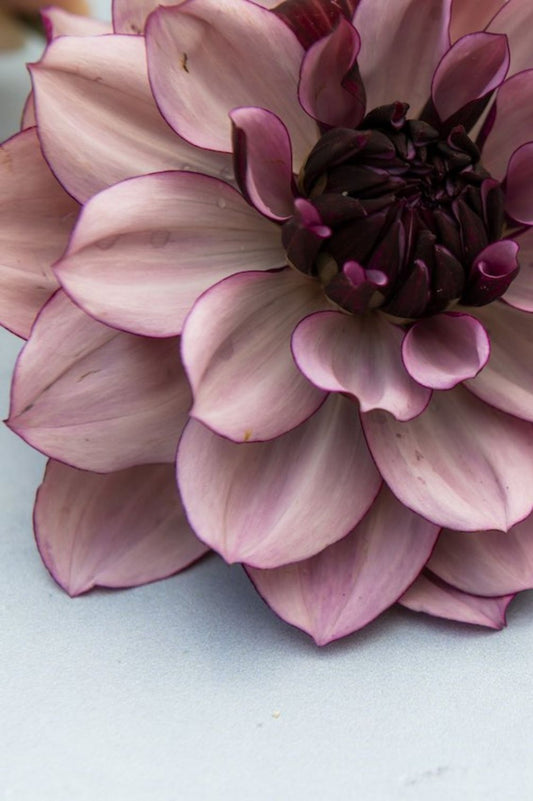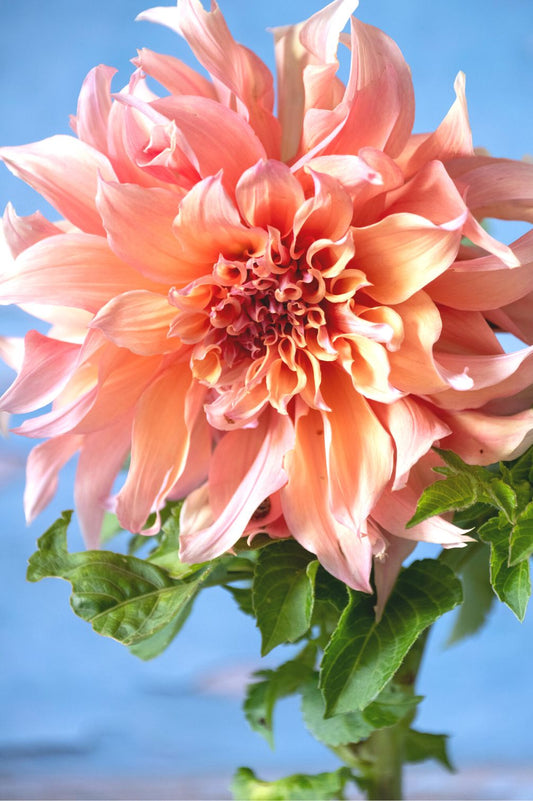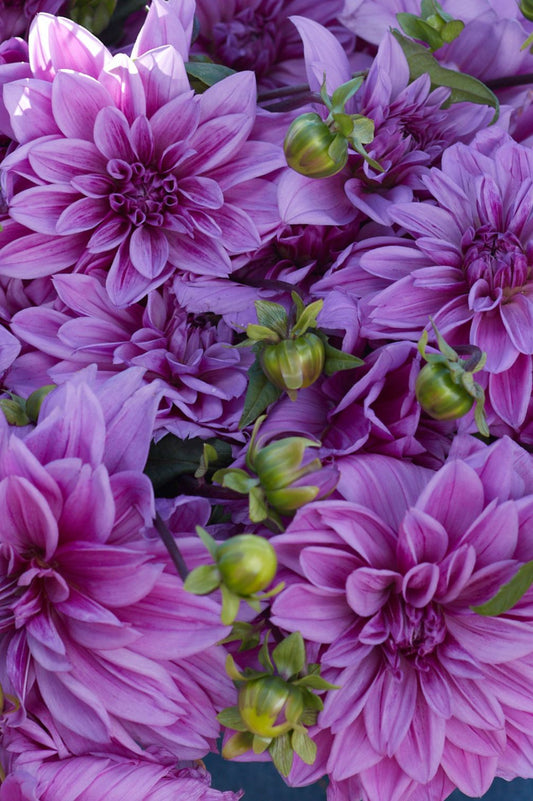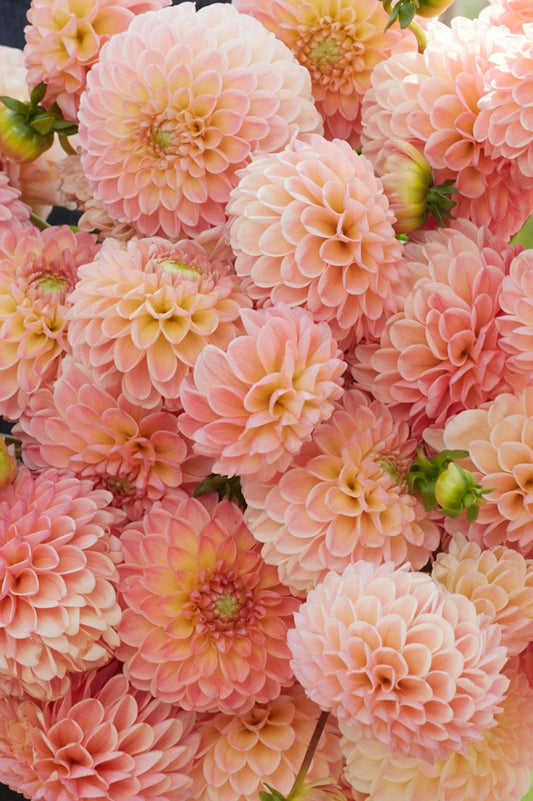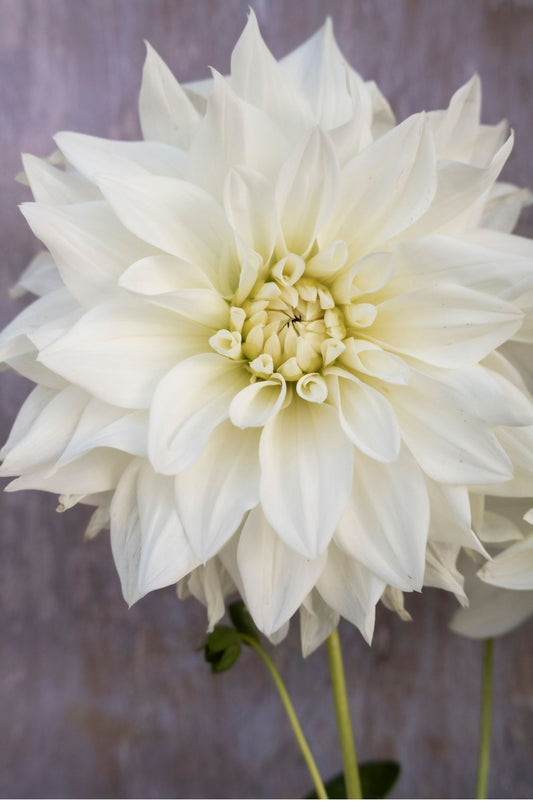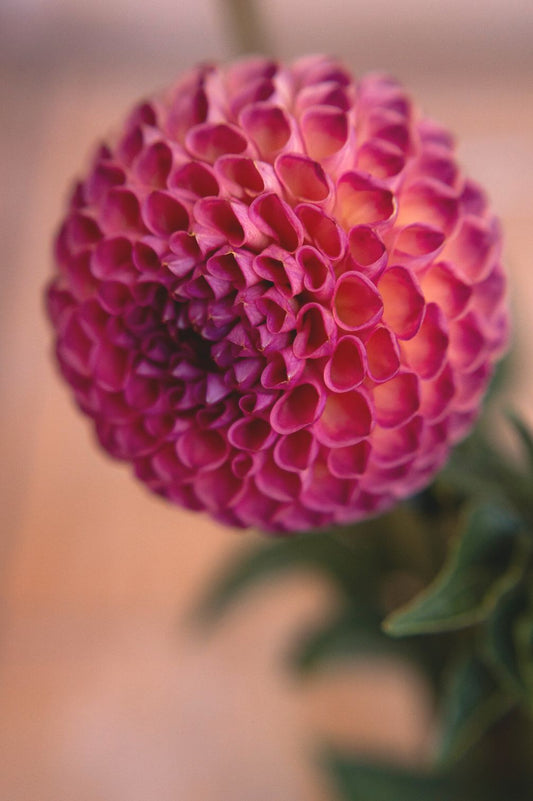WONDERFUL DAHLIAS – Great colors in the garden
I used to dislike dahlias; I considered them stuffy and old-fashioned. It's probably less a change in my taste than the incredible variety of varieties that breeding has produced in recent years that has made these late-summer, colorful flowers so enchanting to me. But older varieties have also suddenly been rediscovered, like the legendary Café au Lait , which dates back to '68.
It's not entirely clear how many varieties exist today. The numbers vary between 20,000 and 57,000.

Normally, I'm partial to "easy-care, once-planted, always-enjoyed" flowers. This warmth-loving lady doesn't necessarily fall into that category. The frost-sensitive tubers have to be replanted every spring and dug up again in the fall. And yet, there's no getting around my late-summer splendor, and nothing in the world can stop me from replanting them every year. And because I love them so much, I even dedicated a book to them. dedicated to.
PLANTING DAHLIAS
Depending on the variety, dahlias bloom from June until the first frost. You can plant the tubers in pots indoors starting in March and start growing them. However, they need plenty of light once they emerge from the soil. During the day, if weather permits, they should definitely be exposed to daylight (or you can use grow lights). So my big piece of advice: take your time and don't start too early.
Or plant them directly in the ground at the end of April/beginning of May (the Ice Saints won't really affect them, as the ground is no longer frozen solid). Potting them early offers several significant advantages:
1. They bloom earlier and therefore last longer.
2. The already larger plants have a better chance against the voracious snails, which will not leave a young dahlia alone.
3. The dahlias in the pot can quickly spend the night in a garage or in the house during a sudden frosty night.
IN A POT OR DIRECTLY INTO THE GROUND
You can either leave it in the pot (assuming it's large enough) or plant the young plant in your flowerbed. Sometimes I place the potted dahlia directly in the flowerbed, which makes digging it up in the fall much easier. Coating the pot with Schnexagon will protect it from snails. However, the plant needs additional nutrients in the pot. It's best to use good compost or organic fertilizer ( Blühwunder is perfect for this). If you plant the tuber directly in the ground, make sure that the cut stem from the previous year is facing upwards and cover everything with about 3 cm of soil. You can also work compost or horn shavings directly into the planting hole.

And VERY important :
Please be very sparing with watering before the tubers have formed roots and the first green shoots appear from the soil.
You can water it, but please don't water it again until the plant shows itself.

CARING FOR DAHLIAS
A sunny spot is essential—dahlias definitely don't thrive in shade. They tolerate partial shade, but won't bloom quite as profusely. Since many varieties can grow quite tall and large, you should support or tie them down in the summer. It's best to stick a stake in the soil right when planting, so you don't risk accidentally skewering the tuber later. Regularly removing spent flowers will encourage dahlias to bloom more and for longer.
Dahlias don't have any special soil requirements; any normal garden soil will do. It just needs to be well-drained, otherwise the tubers will rot.
Unfortunately, they're not winter hardy, so you'll need to dig them up after the first frost (after the first frost is enough—if you dig them up earlier, you might miss out on your last blooms...) and store them in a cool, but frost-free place. To do this, cut the above-ground shoot to about 5 cm above the soil, then carefully remove the tuber from the soil. I place mine in wooden boxes lined with newspaper. Ideally, you should cover them with sand—this prevents them from molding or drying out. Then they go into the cellar until March or April.
Tweezing
I recommend pinching dahlias. You'll be rewarded with significantly more blooms, albeit a little later. Once the shoots have reached a height of 20–30 cm, cut the main stem just above a pair of leaves with sharp scissors or a good knife.
This takes a bit of effort, but it encourages the dahlia to form more shoots and branch out below the cut. The dahlia also becomes more vigorous in growth, and the flower stems develop more sturdily.

DIVIDING DAHLIAS
You should divide your tubers regularly to prevent them from growing too large, as otherwise they'll eventually be depleted. This will also give you more plants. The ideal time is from March onwards, when the tubers begin to sprout and have formed what are known as "eyes" in their winter storage, from which the new shoots will grow. If you're having trouble seeing the eyes, bring the dahlias into a warm place and let them forge ahead for a few days.

Then simply pull the tubers apart or separate them from the mother tuber with a sharp knife. Very important: Make sure that at least one eye is visible on each piece, as this will become your new, magnificent dahlia. If necessary, treat the cut area with charcoal. The dahlia should then be planted relatively soon.

DAHLIAS AND INSECTS

Dahlias often have an unjustified reputation for not being insect-friendly. Of course, open-flowered specimens seem better for our buzzing friends at first glance, but many double-flowered specimens also open during their blooming period and provide a good food source. Above, Bishop of Leicester . And look below, Rocco :
 First closed and shut, then the sweet nectar buffet opens.
First closed and shut, then the sweet nectar buffet opens.
DAHLIAS AND SNAILS
Unfortunately, dahlias are high on the menu of our slimy garden inhabitants. Therefore, they should be protected from them at all costs. I sometimes wrap untreated sheep's wool around the stems of my freshly planted dahlias. A nice side effect is that the wool makes an excellent fertilizer. But traditional slug collars also keep the voracious beasts away, at least until the plant is large and strong enough. And I've actually observed that as the plant grows larger, the slugs lose interest in them. If you have voles in your garden, protect the tubers with wire baskets.
DAHLIAS AND THEIR COMPANIONS
Together with asters and autumn anemones, rose hips and blackberries, they always delight me with their wonderful play of colors in the autumnal cottage garden.
I also like to combine my dahlias with Argentine verbena or cosmos (all information about cosmos and how to grow them HERE ). And my new favorite combination is dahlias with ornamental carrots and/or sedum carrots .

White and green tones, such as sage, shrub ivy, white scabious and light cosmos (such as Double Dutch White or Tetra Versailles Flush ) as well as silvery mugwort, go beautifully with pale pink dahlias.

DAHLIAS IN A BOUQUET
Dahlias are wonderful cut flowers. Last year, I even planted a raised bed of dahlias just for cutting bouquets. It's important to cut the dahlias in the morning with a sharp knife and then immediately (!) place them in water.


Photos: Janina Laszlo, Syl Gervais, Michaela Eriksson, Seila Malo






